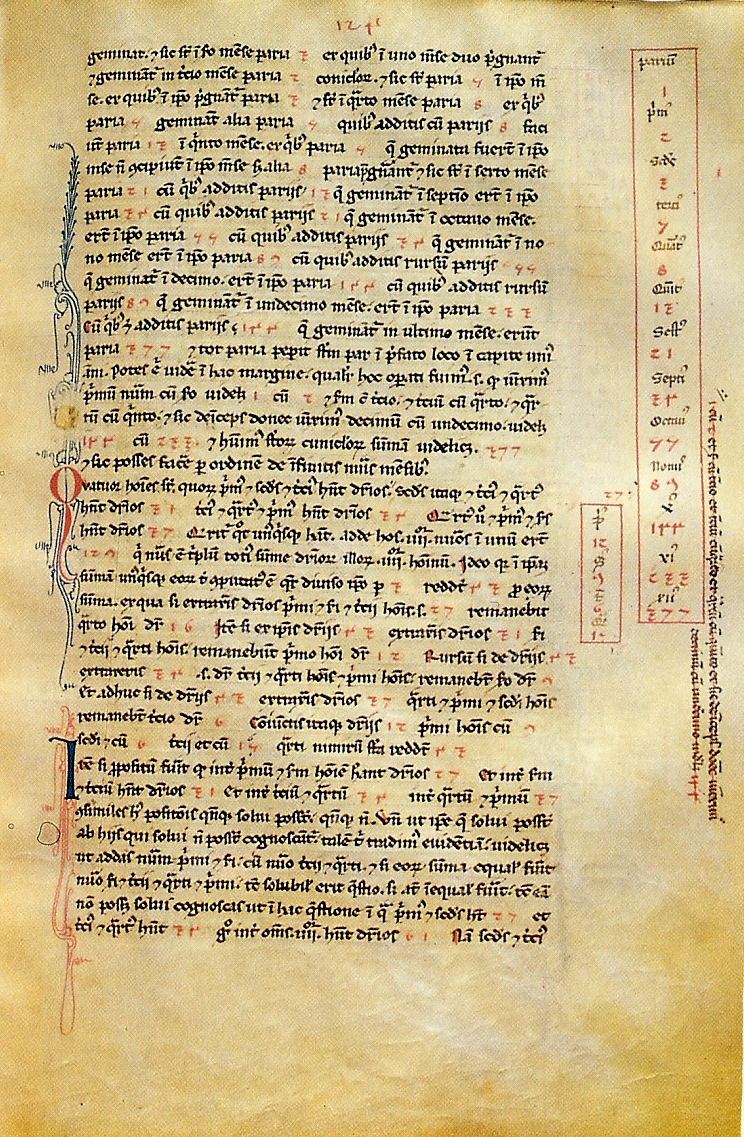
The page of Liber Abaci specifying the rabbit problem and spells out the Fibonacci numbers in the box
Before Fibonacci, other scholars such as Gopāla and Hemachandra in the 12th century were interested in rhythmic patterns that were formed from one-beat and two-beat syllables. They both mentioned the numbers 1, 2, 3, 5, 8, 13, 21, ... (Chandra, Pravin, & Weisstein).
When he was thirty years old, Fibonacci published his book Liber Abaci. In it, there are various problems and mathematical theorems including the introduction of the number zero. One of his most famous problems is the rabbit problem:

The page of Liber Abaci specifying the rabbit problem and spells out the Fibonacci numbers in the box
The solution, if no rabbit ever dies, is the sequence of numbers known as the Fibonnaci Sequence as discovered by Fibonacci in 1202. In 1228, Fibonnaci listed the first 14 numbers for the first time. They were named Fibonacci numbers by the French mathematician Edouard Lucas. Another sequence called Lucas numbers was discovered by Lucas. They are defined as Ln=Ln-1+Ln-2 for all n ≥ 3 so the sequence goes 1, 3, 4, 7, 11, 18, 29, ... ,Ln-2, Ln-1, Ln, Ln+1, ... The Fibonacci sequence was discovered independently by Johann Kepler centuries later and many other mathematicians have expanded on the subject (Debnath, 2011).
